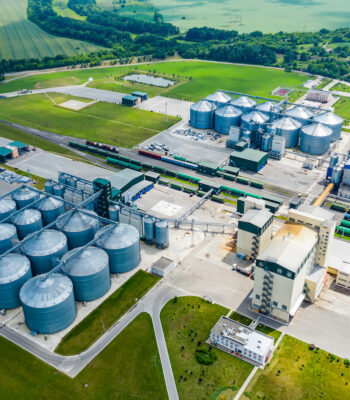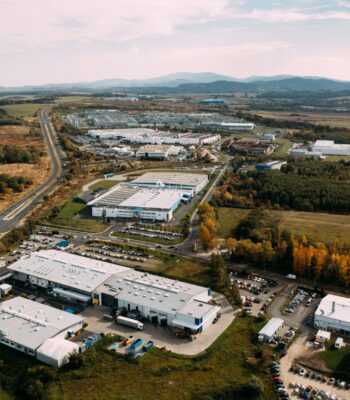The global movement toward decarbonization is picking up steam in 2025, with new regulations taking effect worldwide and increasing demands from customers and investors. The pressure is on for corporate sustainability teams to achieve real progress and show verifiable results—but resources and time are as limited as they’ve ever been. Something’s got to give, and we predict these challenges will force climate teams to streamline their work, automate as many menial tasks as possible, and generally cut the fat from their programs. But where to start?
Your tech stack. Sustainability software has come a long way in the last few years, and it’s time to put it to work. The right tools can transform how your team operates—turning manual data entry into automated workflows, spreadsheets into insights, and scattered processes into streamlined systems. Whether you’re just starting your decarbonization journey or scaling an established program, building a smart climate tech stack isn’t just about efficiency—it’s about creating the bandwidth your team needs to drive real change.
Let’s break down what that looks like in practice.
Need help building your climate team’s tech stack? Optera’s team of experts has decades of experience. Get in touch and we’ll set your team on the right path.
The business case for a comprehensive climate tech stack, based on program maturity
Early-stage climate teams face brutal resource constraints. Small teams juggle multiple priorities: building an initial emissions inventory, getting supplier engagement off the ground, and getting their arms around multiple methodologies and reporting frameworks—all while trying to build internal buy-in to grow their team and budget. Here’s where the right tech stack changes the game:
- Automation slashes the time spent on data entry, validation, and calculations. A solid carbon accounting platform turns weeks of spreadsheet work into hours of validation.
- Built-in methodology and emission factors eliminate guesswork and back-and-forth. The right platform makes it easier for verifiers to give your report the go-ahead.
- Standard reports and dashboards help you nail the basics without reinventing the wheel. Most of today’s corporate sustainability platforms are built with CDP, TCFD, and CSRD reporting in mind.
Enterprise teams face a different challenge: scale and complexity. You’re tracking emissions across multiple business units, wrestling with diverse data sources, and coordinating global initiatives. Your tech stack needs to:
- Connect fragmented systems and standardize data collection across the organization. One source of truth beats a hundred spreadsheets spread across multiple folders.
- Support sophisticated analysis for strategic planning. Think scenario modeling for SBTi targets or drilling into product-level emissions.
- Generate granular insights for targeted action. Support for supplier-specific emissions data helps you spot opportunities for meaningful impact.
- Enable seamless collaboration between sustainability teams, facilities managers, procurement teams, and external stakeholders.
Small teams need tools that maximize limited bandwidth. Enterprise teams need systems that bring order to chaos. But both share a common goal: shifting the focus from data wrangling to strategic action.
Essential sustainability software: What you need now vs. what you can grow into
Key components of a sustainability team’s tech stack include:
- Carbon accounting
- Data visualization
- Project management
- Supplier engagement
- Scenario modeling
- Real-time energy monitoring
- Life-cycle assessment
The right assortment of these is going to vary depending on your team’s goals, priorities, structure, and resource constraints. However, certain tools have become table-stakes for corporate sustainability teams, while others are “nice-to-haves” targeted at high-maturity programs or companies within certain niches.
Climate tech non-negotiables
A robust carbon accounting platform forms the foundation for most modern corporate sustainability programs. This is the source of truth where raw emissions data is transformed into meaningful ESG insights that can be reported to verifiers, regulators, investors, customers, and other stakeholders. The platform you choose should have transparent emissions factors and calculation methodologies, flexible reporting frameworks, and data you can slice and dice by facility, supplier, and more.
Robust data visualization is also a must. If it’s not built into your emissions management system, tools like Tableau and PowerBI are go-to solutions. Finally, project management software like Asana, Monday.com, or ClickUp makes it possible to track sustainability projects from start to finish.
The next phase
Most climate programs kick off their scope 3 emissions management with spend-based or average data methodology, but when you’re ready to move onto supplier specific data for your scope 3 emissions inventory, supplier engagement software becomes crucial. It streamlines supplier data collection, management, and analysis—essential for companies that are serious about their value chain emissions. Look for features that automate supplier outreach tasks, standardize data collection, and integrate with your carbon accounting platform. Ideally, the solution you choose for supplier engagement will also integrate with your company’s other procurement and supply chain tools.
Additional ESG tracking tools help manage the broader picture, including social and governance metrics. They’re particularly valuable for companies whose reporting requirements expand beyond emissions. The right platform will house everything from water usage to diversity, creating a comprehensive view of your ESG performance.
Nice-to-haves or niche solutions
For companies focused on manufacturing and product design, with a mature sustainability program, life-cycle assessment (LCA) software is a natural progression. Save this investment for when you need detailed product carbon footprinting or emissions insights.
Scenario modeling tools support sophisticated climate strategy. They’re powerful for enterprise teams plotting long-term decarbonization paths, but most early-stage programs can handle basic forecasting in spreadsheets.
Standard utility data is a great first step for facility-level emissions tracking. Eventually, enterprises with a large facility portfolio may want to explore solutions for real-time energy monitoring.
Key takeaways:
- Start with carbon accounting, visualization, and project management
- Add supplier engagement and ESG tracking as you scale
- Save specialized tools for when you have specific use cases
- Focus on integration—every new tool should talk to your core platform
Ready to evaluate your options? Optera combines core carbon accounting with powerful data visualization and collaboration tools—all in one platform. Let’s talk about your specific needs.
Building your climate tech stack: A practical roadmap
Building the right assortment of tools for your team’s specific needs is a step-by-step process. Even if you have the budget available to make multiple major software investments at the same time, it’s worthwhile to take it slow.
1. Start by defining your team’s biggest goals and overall strategy
These could include:
- Decarbonization
- Achieving a science-based target
- Regulatory compliance
- Reporting: to the public, to CDP, to customers, to investors, to regulators
The goal that is most important to your program should determine how you invest in software.
2. List the tools you’re currently using in pursuit of that strategy
Evaluate what you already have, and answer:
-
- What’s working well?
- What isn’t working?
- Are there opportunities to consolidate?
- Are there gaps?
- Which tools integrate with one another, and where do we need deeper integration?
- How much do these tools cost?
This audit should reveal some easy wins, as well as longer-term, thorny challenges to solve with software.
3. Prioritize which solutions you need in order to fill gaps now, in the medium term, and in the long term
Consider building a roadmap for your long-term vision, so you know what your future requirements for integration might be. That way, you can avoid investing in software today that won’t cooperate with the software you add in future years.
4. Identify which tools your company is already paying for, that you could add seats to.
For example, does the revenue or operations team at your company use PowerBI or Asana already? Chat with your procurement colleagues to see about getting access.
5. Research solutions & kick off potential RFP process
Once you’ve identified a need for software, you’ll likely need to work closely with your procurement team on the process to fill that need. That may include a request for proposal (RFP)—check out our blog here for a guide to the RFP process.
6. Understand the full picture of services and support
Before buying a new software, it’s essential to understand the services and support that come with that investment. You may need to invest in additional consulting hours to support implementation, onboarding, and ongoing projects.
7. Adopt solutions
Your tech stack will evolve over time. As you add solutions, ensure that you maximize team adoption of each one to make the most of your budget. Continually evaluate how well each solution addresses your team’s needs and integrates with the rest of your climate tech stack, and make updates as needed.
Climate tech stack as competitive advantage
The sustainability software market is maturing fast. Your climate tech stack isn’t just about making life easier (though it does that too) it’s about creating the bandwidth for strategic work. Every hour you save on data entry is an hour you can spend on actual decarbonization work. Teams stuck in spreadsheets are getting left behind, while their competitors use smart tools to spot opportunities and drive real impact.
Start small. Build smart. Focus on tools that solve real problems, not shiny features. And remember: the goal isn’t perfect software—it’s better sustainability outcomes.
Ready to upgrade your climate tech stack? Let’s talk about how Optera can help.


